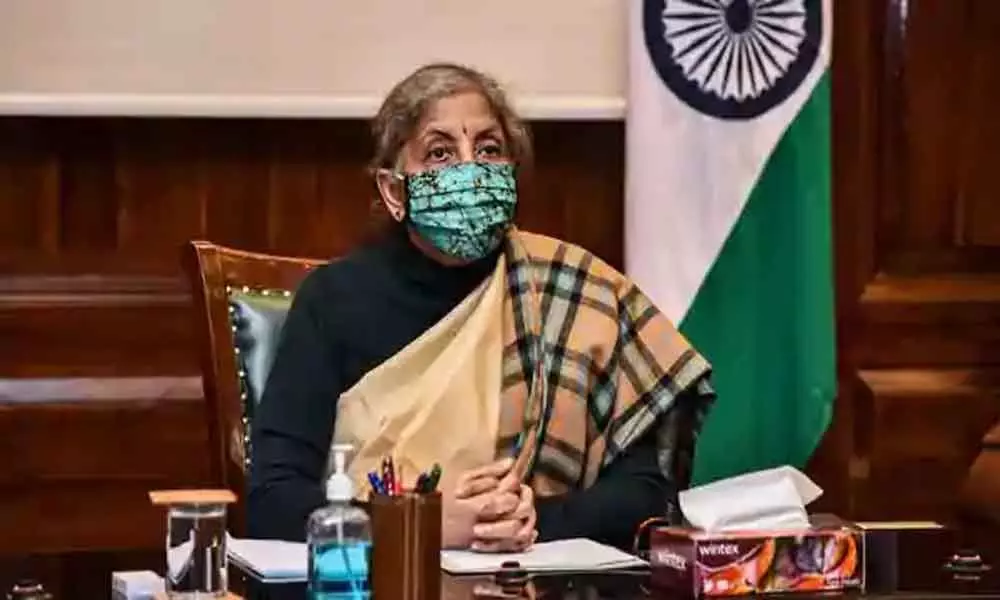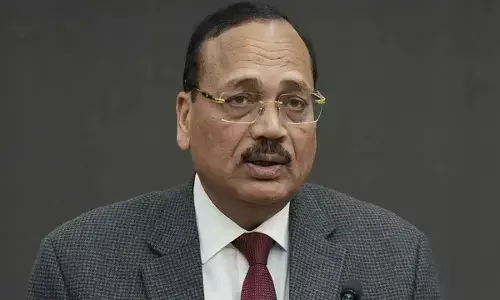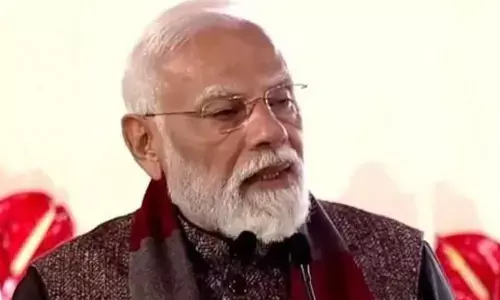Union Budget: Budgetary Terms that you should know simplified

Union Finance Minister Nirmala Sitharaman
Union Budget is round the corner and will be announced by the Union Finance Minister Nirmala Sitharaman on Monday, February 1, 2021.
Union Budget is round the corner and will be announced by the Union Finance Minister Nirmala Sitharaman on Monday, February 1, 2021. It will be great to see what the finance minister will carry to bring back the COVID-hit Indian economy on track and revive the gross domestic product which is likely to contract 7.7 per cent in the current financial year as against a growth of 4.2 per cent in the previous fiscal, the first advance estimates released by the National Statistical Office (NSO) on January 7, 2021.
Interestingly, everyone knows about the Union Budget that is presented annually but there are certain terms or the jargons that the finance minister uses while presenting the budget in the Parliament, which are technically hard to understand by the common man. So, Hans India is trying to make you aware of certain budget-related terms and simplify its meaning for you. Find below the certain terms that are used during the budget presentation:
Halwa Ceremony: Printing process of the Union Budget generally starts a week before its presentation in the Parliament with customary 'Halwa Ceremony' in which Halwa, a sweet dish, and it is served to every the officers and support staff involved. Because in India starts everything on a sweet note.
Blue Sheet: It is a sheet of blue colour that contains the key numbers and consists of hundreds of pages of the budget document. It forms the backbone of the whole budget process and is kept as a secret, even from the FM.
Union Budget: The Union Budget presented annually in the Parliament details the government's plan for taxation and spending in the coming financial year. This Union Budget is presented by the Finance Minister.
Annual Financial Statement: Article 112 of the Constitution requires the government to present to Parliament a statement of estimated receipts and expenditure in respect of every financial year, i.e. the period that falls between April 1 and March 31. This statement is the annual financial statement and is usually a 10-page document and is divided into three parts, namely, consolidated funds, contingency fund and public account. The government presents a statement of receipts and expenditure for all these funds.
Consolidated Fund of India: It is the most important of all government funds. It includes revenues received by the government, money that it has borrowed and receipts from loans given by the government flow into the consolidated fund of India. All government expenditure is made from this fund, except for exceptional items met from the Contingency Fund or the Public Account. The government cannot access it without approval from the Parliament.
Contingency Fund: It is a fund that is used to meet the unexpected expenses by the government. The fund is at the disposal of the President of India. Any expenditure incurred from this fund requires a subsequent approval from Parliament and the amount withdrawn is returned to the fund from the consolidated fund. It usually contains Rs 500 crore.
Public Account: It is a fund where the government of India acts as the banker for the public and keeps your money safe and pays it back to you with assured interest returns after its tenure comes to an end. These funds do not belong to the government. Public Provident Fund and National Pension Scheme are examples of Public Accounts of India. The fund doesn't need the Parliament's approval due to its nature. For each of these funds, the government has to present a statement of receipts and expenditure. You can note that all money flowing into these funds is called receipts, the funds received, and not revenue. Revenue in the budget context has a specific meaning.
Budget Cycle: It is the life of the budget from its creation to its evaluation and it comprises of four stages, namely comprise of preparation and submission, followed by approval, execution and audit, and evaluation of the budget.
Balance of Payments: According to the Reserve Bank of India, the balance of payment is the statistical representation of the transactions in goods and services and income that takes place between an economy and the rest of the world. It shows the changes in the economy's monetary gold, the special drawing rights (SDRs) and the financial claims, along with details of unrequited transfers.
Fiscal Year: It is a one year period that the government uses for budget and accounting purposes. It is a period where financial statements of a company or a government are prepared. A fiscal year is also termed as a financial year, which in India starts on April 1 and ends on March 31 of the next year.
Gross Domestic Product (GDP): It is a final value of the goods and services that are produced within the geographic boundaries of a country in a given period, typically a fiscal year. The metric is an important indicator of the economic performance of a country.
Net Domestic Product (NDP): It is the annual measure of the economic output of a country with adjustments for depreciation. NDP = GDP – a depreciation of the country's capital goods.
Revenue Budget (revenue account): In the context of Union Budget, Revenue Budget is the estimated amount required for the growth, development and infrastructure of the country.
Capital Budget (capital account): Capital Budget is the estimated amount of capital receipts and payments. It includes investments in shares, loans and advances granted by the Central Government to State Governments, Government companies, corporations and other parties.
Service Tax: It is a tax on services that are provided like LPG or Telephone bill, for instance, attracts a service tax.
Direct Tax: These taxes are directly levied on the income or wealth of a person or corporate, like income tax and corporate tax among others.
Indirect Tax: It is a kind of tax that usually not levied on the person who pays the tax. These are taxes which are levied on the goods and services supplied. The final consumer pays it at the time of sale. For example, excise, GST, Customs Duty, etc.
Excise Duty: Duties imposed on goods that are manufactured in India and are meant for home consumption.
Goods and Services Tax (GST): It is levied on the supply of goods and services in India. It came into effect from July 1, 2017.
Customs Duty: This is a duty that is imposed on imports and exports of the goods from or into the country. It is a kind of indirect tax and is passed on to the final consumer of the goods and is levied to protect the domestic industry or sector
Fiscal Deficit: Fiscal means money and deficit means shortage. A fiscal deficit occurs when the government's total expenditure exceeds the revenue, excluding the borrowings. In other words, it can be understood as a case where the government's non-borrowed receipts fall short of the entire expenditure and to fulfill the deficit, the government has to borrow money from public or issuing bonds or in form of loans. The excess of total expenditure over total non-borrowed receipts is called the fiscal deficit.
Non-tax revenue: Non-Tax Revenue is the recurring income that is earned from the sources other than taxes by the government. They are the revenue receipts that are not generated by taxing the public. It also includes the interest that the government receives through the loans provided by it to the state governments, Union Territories, private enterprises and the general public. Other sources of non-tax revenue include dividends and profits received from public sector companies, services provided by the government like social and community services, like medical services and economic services such as power and railways. These factors are an important source of non-tax revenue.
Revenue Receipt: Expenditure and receipts that do not entail sale and creation of assets are included in the revenue account. On the receipts side, the taxes would be the most important revenue receipt, while anything that does not result in the creation of assets is treated as revenue expenditure. Salaries, subsidies and interest payments are good examples of revenue expenditure.
Capital Receipt: Expenditure or receipts that liquidate or create in general goes under the capital account. It includes a receipt that results in either reduction in government assets (sale of share, disinvestment) or increase in some liability (government borrowings) is a capital receipt. This receipt includes government provident funds, market loans, small savings, external loans, accretions to various deposit accounts, depreciation and reserve funds of various departments like railways. The capital receipts are of two types and they are Debt receipt and non-debt receipts. The debt receipts are those where the government needs to repay along with interest. Non-debt receipts are those which come to the government by the sale of some assets. Most of the capital receipts of the government are debt receipts and are shown as liabilities of the Government's balance sheet.
Treasury bills (T-bills): T-bills are bonds or debt securities with maturity of less than a year and are issued to meet short-term mismatches in receipts and expenditure. Bonds of longer maturity are called dated securities.
Revenue Deficit: It occurs when the government's revenue expenditure exceeds the revenue receipts. It is a situation, where the government's income is not sufficient to meet its day-to-day functioning and it is an important control indicator. In this case, the government borrows for consumption purposes not for creating assets, which results in a greater portion of revenue receipts going towards interest payment and eventually, a debt trap.
Primary Deficit: Primary Deficit is the difference between the fiscal deficit of the current year and the interest paid on the previous borrowings made by the government. In short, Fiscal Deficit – Interest payments on the previous borrowings made by the Government = Primary Deficit. Reducing primary deficit indicates progress towards fiscal health. The Budget document also mentions deficit as a percentage of GDP.
Fiscal Policy: A decision that the government takes for adjusting its expenditure level and revenue collection - via taxation, to monitor and accomplish the nation's economic goals.
Monetary policy: An action plan that is initiated by the monetary authority mainly the Reserve Bank of India (RBI), to monitor and manage the demand and supply of money in the economy.
Inflation: It is a situation where the prices of the goods generally increase and purchasing value of money falls in an economy.
Public debt: Public debt disbursals and public debt receipts are repayments and disbursals made during the year, respectively. The difference is the net accretion to the public debt. This public debt can be divided into external and internal. Externals mean funds borrowed from non-Indian sources and internal means money borrowed within the country. Internal debt comprises treasury bills, market stabilisation schemes, ways and means advance, and securities against small savings.
Finance Bill: A situation where the Union Government proposes to amend or introduce some changes in the existing tax structure or continue with the same. The proposal is sent to the Parliament for approval in the form of Finance Bill. It can only be presented in Lok Sabha.
Revenue Budget: In the case of the Union Budget, the revenue budget is an estimated amount that the government needs for growth, development and infrastructure in the country.
Corporate Tax: IT is a direct tax that is levied on a company or a corporate on their profits.
Taxes on Income other than corporation tax: Income tax paid by non-corporate assesses, individuals, for instance.
Disinvestment: It is a case, where the government seeks to sell or liquidate any of its assets or subsidiary (part of it or completely), for instance, the government seeks to divest its stakes in Air India and BPCL, in the ongoing financial year (FY21). It is also called 'divestment' or 'divestiture.'
Budget at Glance: It is a document that shows a brief of receipts and disbursements with details on tax revenues among others. It also throws light on the break-up of expenditure – planned and non-planned expenditures. The allocation of plan outlays by Ministries and Departments and sectors, and details of the resources transferred to the State and Union Territory Governments by the Central Government.
Macro-Economic: It is a branch of economics that studies the behaviour of aggregates in an economy and it includes the rate of growth, inflation, price levels, GDP, National Income and changes in unemployment.
Micro-Economic: It concerns with the decisions an individual and firms have to make in relation to the allocation of scarce resources in an economy. These are the decisions that affect the goods market by affecting the supply and demand and hence the price.
Central Plan Outlay: It is the division of the monetary resources among various sectors of the economy and ministries of the government.
Zero-based budgeting: A practice in which expenditure for the economy is allocated and estimates for revenue of the made for a new period. It is a situation, where the created budget will have to justify every expense for the new period.













